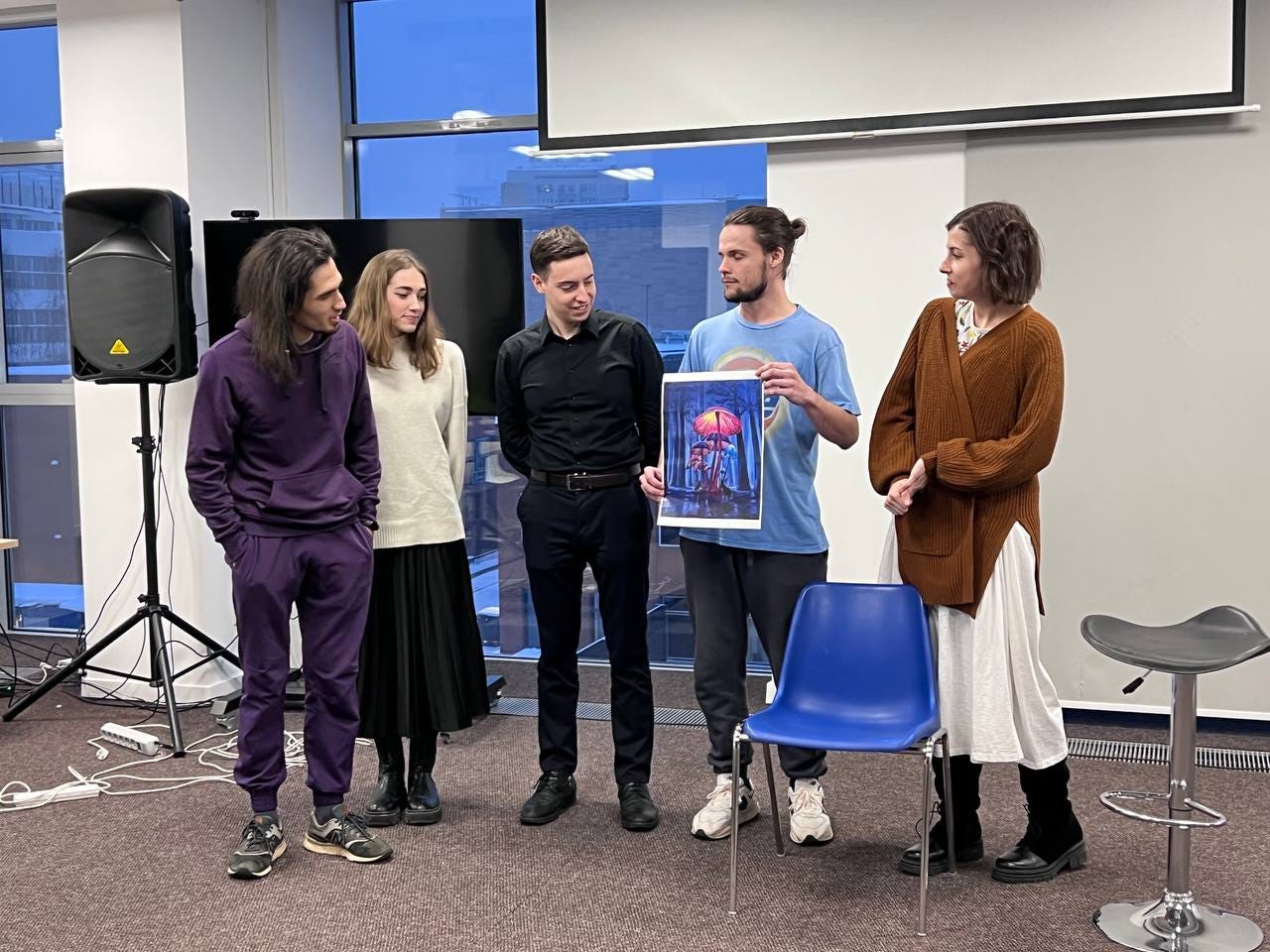There is a remote string of rocky islands outside Saint-Petersburg, Russia, where toponyms drift to Finnish and the grounds are progressively devoured by various colorful moss. It is there — amidst the tranquil unity of nature — that my journey into the realm of community-building ignited.
Much like moss forms fractals, our societies reflect similar patterns. Individuals function as nodes in a network of relationships, societies mirror the dynamics of families, and ultimately, the entire planet emerges as a vast, interconnected social network without a definitive end. At its core, the act of community creation involves redirecting and reshaping the connections among people. If you’re motivated and can ignite motivation in others well, you’ll most likely succeed.
I’m running a global community that consists of around 100 people living from Argentina to India and from the US to Kazakhstan. We are 2.5 years old, much like a baby learning to make its first steps and starting to talk. I’m also a member of several communities — global and local, large and small — Effective Altruism, ASES Stanford, etc., and I’ve read a dozen good books and social psychology articles on how to build those. Here I’d like to share this practical experience so that more well-run communities emerge, and we as builders can serve our dear humanity better.
Here are the top-5 pillars of community-building, prioritized. Get these right by answering the questions below, and your community will be born healthy.
purpose
leadership
first participants
unity
vision
I’ll now describe the function of each pillar together with a relevant example and tips on how to comprehend those for yourself.
(1) Why should your community exist?
Or rather — what compels us, a diverse mix of individuals with distinct aspirations, to unite as a collective? The common answer is to either satisfy a need that is difficult or unable to reach by yourself or to amplify a cherished experience by sharing it among community members.
The formation of a community often arises from the necessity of survival, the presence of a common adversary, or the adaptation to severe external conditions — these constitute the traditional pathways to communal bonding. You may notice that all these routes involve a reaction to something outside, and indeed the primary physiological motivations are the easiest to harness. Unfortunately, such communities often exist for a reason caused by injustice or poor social politics.
However, we should aim to develop communities driven by internal motivations such as the pursuit of knowledge, the sharing of love, and the joy of discovery — these represent the evolved approaches to community-building. These ones lack specificity and demand a greater level of thinking through your motivation, as well as social architecture that rewards participants betters. In short, you may create a community for something instead of against something.
The purpose of the community I’m building (further referenced as “my community”) is to develop how individuals and institutions think, act, and behave emotionally in order for humanity to thrive. Our structure is complex, as we simultaneously exist as a community and a social organization, a duality that is traditionally considered separate entities. I’ll dive into the reasoning for this complexity in future posts.
(2) Who will represent the collective will of the people?
This question highlights the need for leaders — empathic, thinking, daring, and visionary individuals that guide others and embody their interests.
… people are able to influence and lead others — sometimes in creative or unexpected ways — because, and to the extent that, they are seen by those others to represent what it is that “we” means and what it is that “we” stand for
© “The New Psychology of Leadership” by Alexander Haslam et al — a great research book on leadership driving my current understanding of it and the 4th identity pillar mentioned further.
I strongly believe that leadership is a role for some humans to guide others. I’m also a huge fan of situational leadership, meaning that I’m happy to both represent and be represented if done decently. Therefore, in my community, most people could lead if they’re fit to do it. However, at the very beginning, I had to actively lead everything from basic processes to strategic decisions and their implementation — not because others lacked some personal traits, but rather due to my dutiful position as a community co-founder.
(3) How will you bring the early adopters?
Just as in startup ventures, the significance of initial members or users cannot be emphasized enough. These pioneers serve as a litmus test for your community: they could either exemplify its feasibility and strength or, if chosen poorly, become detrimental to its reputation.
Here’re some qualities to look for when inviting your first members:
personal trust — they know you won’t consciously wish ill upon them, and the other way around; they also know you have their interests at heart
curiosity — they are happy to try a new thing!
ambition — early stages of building a project provide unparalleled opportunities to tune it to their interests, as long as these do not diverge from the overarching mission
empathy — be that emotional or cognitive empathy, they know how to connect with others or how others relate to each other and are ready to use this knowledge
My community was co-founded by two people who already trust and complement each other, and we’ve meticulously sifted through our personal networks to invite those who were most in sync with our vision. Some of them have left by now, while some have become the driving force behind our existence, inviting multiple members and doing great work.
(4) What are the core identities of this community?
To truly represent a collective, it is crucial for it to possess a self-identity. The topic of social identities deeply intrigues me as people form entire universes of values and relationships based on diverse perceptions, often to the extent of dedicating their lives to these constructs. The differences among identities are both sources of conflict and unwinding adventures of the human race. But where do communities fit?
From my current standpoint on social psychology, identities find their foundation in values — essentially, what is considered profoundly important and esteemed by an individual or a group. The topic of values is so meaningful that I’m planning to invest a whole chapter in it — but to begin with, you’ll need to understand your values and the values of the main shareholders of your community — activists, guides, and other leaders. One simple way to start doing it is this exercise by an ACT (aka acceptance and commitment) therapist R. Harris. Select and share the results with your top five members. The lesson here is not only to compare values but also to understand what you’re currently able to embody and represent for others in your group.
The values drive who we think we are, and I’m quite positive that such thoughts are not completely deterministic. In my community, although we do start with some particular values, we like to challenge and update them very much like you’d update an old OS for your computer.
(5) Where are we going as a community?
Although there is no need for a written vision statement for a community at the very beginning and sometimes — at all, some picture of the future should always be present in the psyche of community leaders and ideologists. Otherwise, how would you know where to lead?
To arrive at a vision, use your reason-to-exist from the 1st pillar (which is equal to a mission of a community), and imagine the ideal outcome for the community. It’s important to note that building a functional and shareable vision statement like Tesla's Master Plan 3 involves a great effort and a profound understanding of your values. Here I’m inviting you to simply plant a seed for it — to be watered by following your values (a topic for Part II).
In my community, we’ve done well to outline our values and are currently working on a vision statement, planning to release it by Autumn 2023.
Some instruments and sources that helped me to initiate and run a community are:
Community Canvas is a great starting framework to model your community once you’ve figured out the basics.
Commsor has a whole ecosystem of tools and guides for your community, although primarily focused on commercial ones.
P.S. Influenced by the fellowship at O'Shaughnessy Ventures, this inaugural Substack post stems from my passion for ideation and its interconnection with real people. Stay tuned for more.





